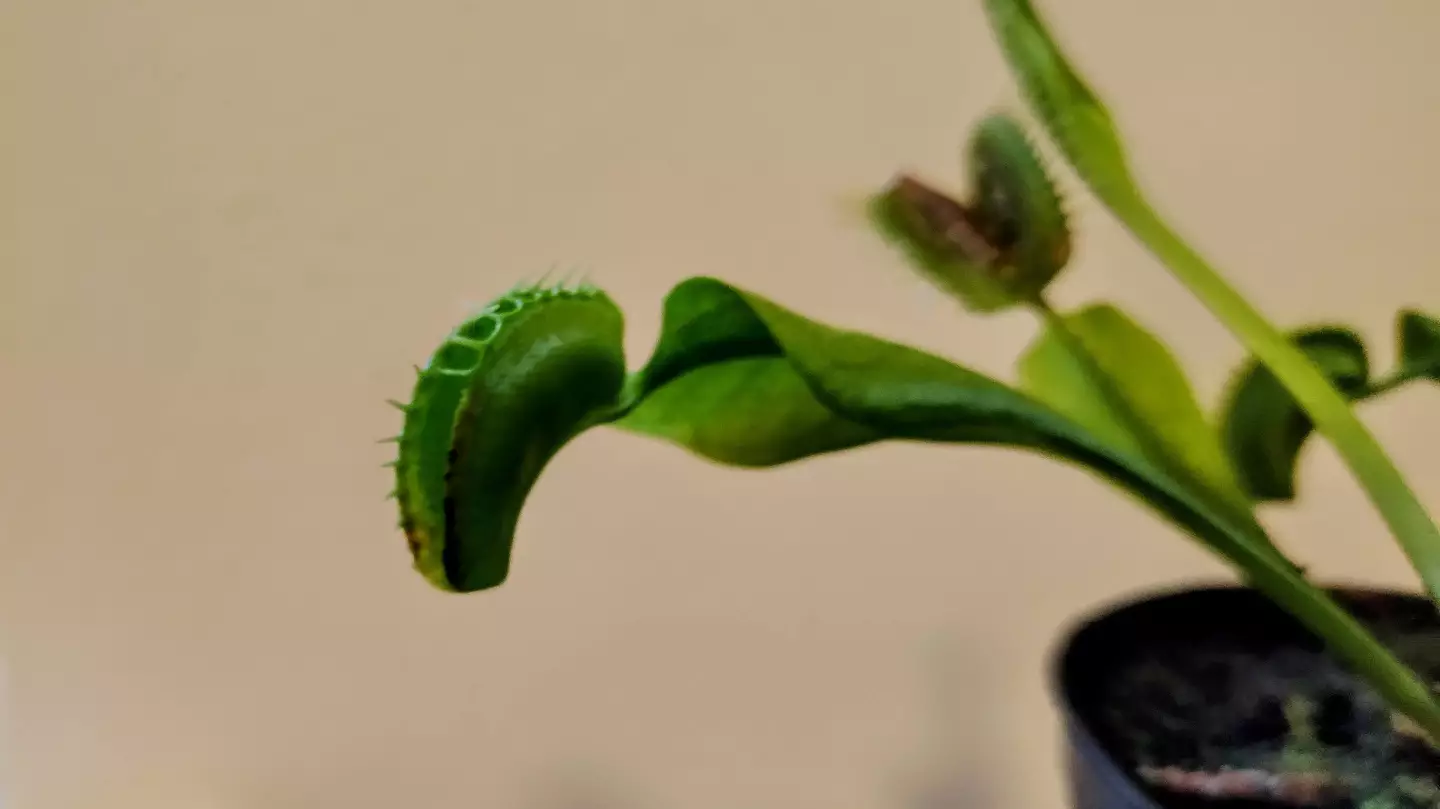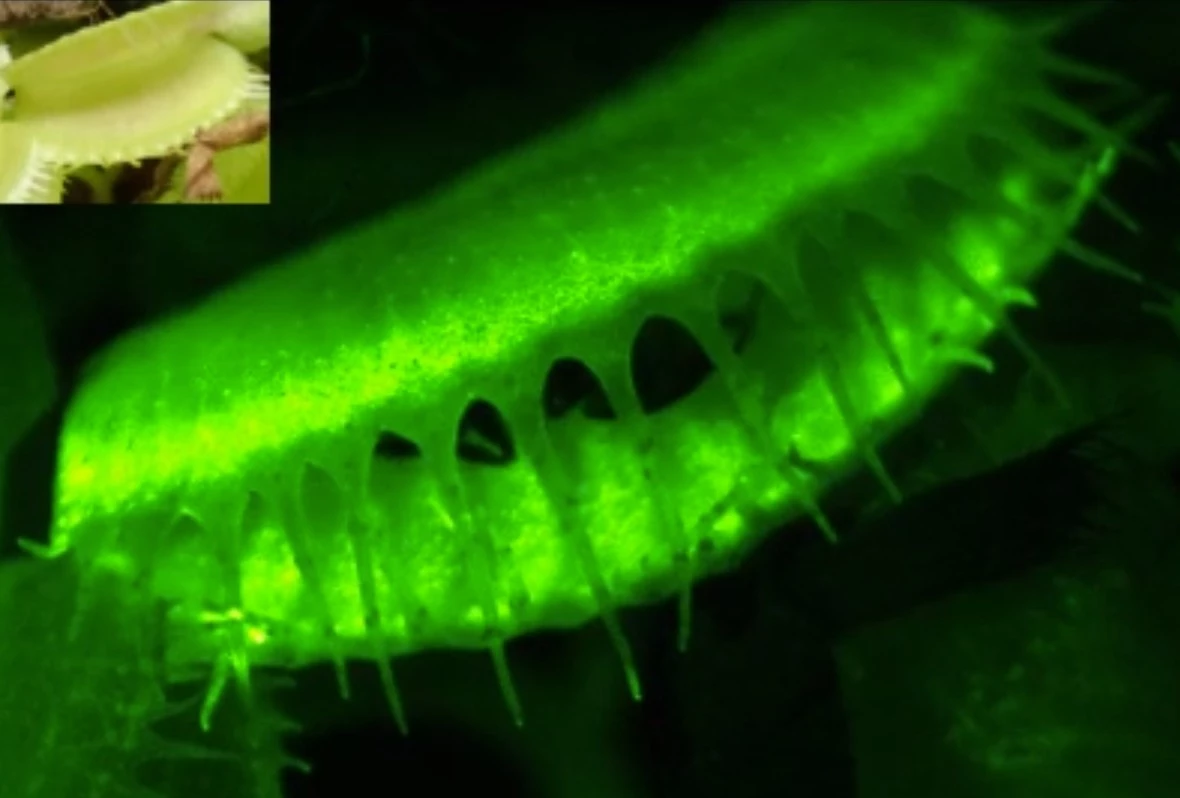What has no brain, no nervous system, and not even nerves, yet acts as if it has reflexes? The answer is a Venus fly trap. This famous carnivorous plant captures insects and other small animals – and scientists have now figured out how.
There is something downright eerie about how a Venus fly trap captures its prey that raises the hairs on the back of my neck – and I've been raising them for 15 years. Venus fly traps, not hairs. The modified leaves that form the plant seem to snap shut like a mouse trap, but they show a remarkable degree of discrimination, including the ability to tell live from dead prey, a water drop from an insect, and they can even reject a potential meal that's too big to chow down on.
The question is, how does the Venus fly trap do all this? It's a plant. It can't be by reflex. There aren't any nerves, there's no nervous system to hook them up to, and there isn't even a brain or a ganglion. So what happens between the physical touch of the trigger hairs in the trap and the trap snapping shut?

The mechanics are simple. Instead of muscles, the fly trap leaves are pre-stressed through sustained hydraulic pressure. Once triggered, the stored energy is released like a spring, closing the trap. That part is well understood. The question is, how is this triggered?
To find out, scientists at Saitama University in Japan used gene editing to test a hypothesis about how the Venus fly trap works.
The trap depends on the trigger hairs on the leaf. In order to set off the trap, the hairs have to be touched twice in quick succession – in less than about 20 seconds. In addition, the touch has to be a sufficiently strong one. If it's too weak, then the trap won't respond.

What the Saitama team found was that touching the trigger hairs sets up an electrical charge using a calcium ion channel called DmMSL10 that is concentrated at the base of the hairs. A light touch causes a small electrical charge, which remains confined inside the plant cell and is ignored. However, if the touch is strong enough and is repeated, this makes for a large electrical charge that sets off a cascade effect like flipping a switch, setting the trap into motion and the hapless insect becoming lunch.
In a way, this electrical impulse is like a very primitive nerve signal. In order to test the idea, the team mutated Venus fly traps so the gene that expressed DmMSL10 is impaired. In addition, they added the indicator protein GCaMP6f, which causes the plant tissues to fluoresce when electrical impulses occur.
The team then looked at how well the mutant Venus fly traps compared to normal ones when they were placed in a terrarium where ants were allowed to roam around with the obvious consequences. The result was that the mutants couldn't generate a large enough electrical charge to trigger the capture mechanism and they were terrible at catching ants, which tended to escape much more often than with the normal plants.
"Our findings show that DmMSL10 is a key mechanosensor for the highly sensitive sensory hairs that enable the detection of touch stimuli from even the faintest, barely grazing contacts," said Assistant Professor Hiraku Suda. "Many plant responses arise from mechanosensing – the plant's tactile sense – so the underlying molecular mechanisms may be shared beyond the Venus flytrap."
The research was published in Nature Communications.
Source: Saitama University via Phys.org







